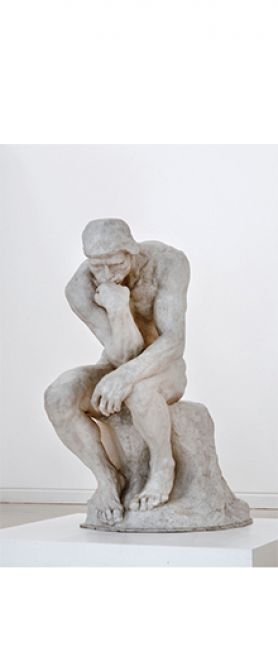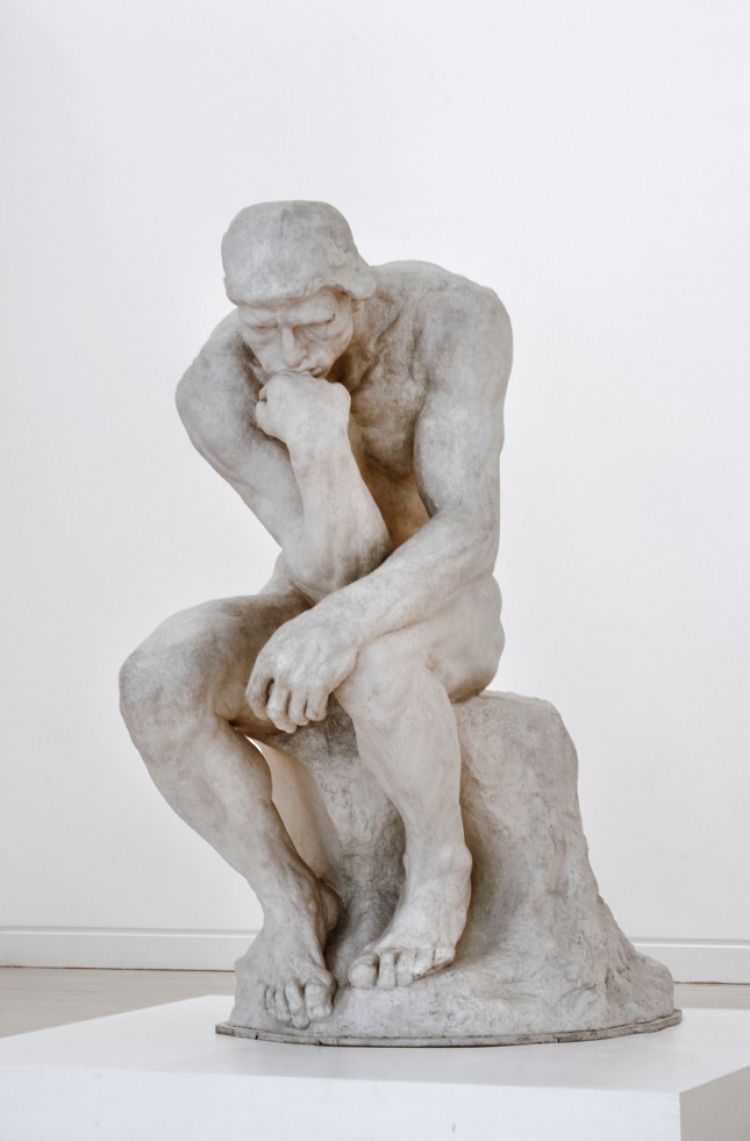The Thinker

An assistant to the sculptor Carrier-Belleuse with whom, after being his student, he collaborated in the decoration of buildings from 1864 to 1872 and then at the Manufacture de Sèvres, Rodin was strongly marked by his visit to Italy in 1876, where the discovery of Michelangelo's statuary and the powerful vitality of its eventful and distorted forms, was a revelation. Moving away from naturalism, he set out to transcribe perceptible reality through the expressive power of the body and movement, manifesting a keen sense of drama and emotion. His work, in search of "inner truth", shows a deep humanity.
Originally, the figure of the Thinker was modelled for the Porte de l'Enfer, an ambitious bronze bas-relief project undertaken by Rodin in 1880 for the future Museum of Decorative Arts in Paris and which remained unfinished. He worked on it for twenty years, while independently exploiting some of its elements. The Thinker, the tympanum's central figure in the bas-relief programme inspired by Dante's Hell, represented Dante himself. But devoid as it is of all identifying attributes, the naked athletic body in an attitude borrowed from the typology of "Melancholy", an emblem of the artist meditating on his work, acquires a universal dimension symbolising the power of the creator. This sculpture, enlarged in 1902-1903, detached from its context and produced in several plaster and bronze copies, became Rodin's most famous work.
